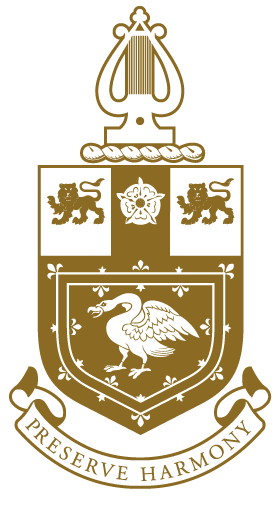History
The Worshipful Company of Musicians has an illustrious past. With roots in the Middle Ages, we have survived war, revolution and over 500 years of changing fashions. Today, we remain as committed as ever to preserving music excellence for many generations to come. Our dedicated archive site gives an in-depth history of the Company.
Key events:
1500: Musicians’ Company formed and given the right to regulate musicians within the city
1604: Company’s first Royal Charter granted by King James I. It then became the Worshipful Company of Musicians
1870: Musician and antiquarian William Chappell reinvigorated the organisation by placing musical philanthropy at its core
1950: King George VI issued a new charter of incorporation
2000: Worshipful Company of Musicians celebrated its 500th anniversary
2013: Company moved to the Guildhall School of Music and Drama
A book about the Company’s history, ‘Apollo’s Swan and Lyre: Five Hundred Years of the Musicians’ Company’ can be purchased on Amazon here. The book covers the following:
“The Worshipful Company of Musicians, the only City Livery Company dedicated to the Performing Arts, celebrated its 500th anniversary in 2000. This history by Richard Crewdson (Clerk to the Company 1967-87) marked the occasion by charting the eventful and often troubled life of the Company since 1500, and the earlier years when the London minstrels attempted to organise themselves into a guild.
In the book the Company’s development is illustrated through the lives of individuals who were connected with it in one way or another – wealthy Jacobean musicians like Henry Walker who sold Shakespeare his Blackfriars house; Nicholas Lanier, first Master of the King’s Music, determined to destroy the Company; Francis Pendleton, Elizabeth Pepys’ dancing master; Tom Britton, the ‘small-coal man’ and pioneer concert promoter, and many others.
The Company’s fortunes ebbed and flowed. Even when it settled down as a 18th-century Dining Club it had to cope with an embezzling Clerk, and its first Alderman proved to be a fraudster and became bankrupt. Surviving fitfully through the 19th century it enjoyed a great revival in the 1880s, which took it triumphantly into the 20th century in its new role as patron of musicians. The main theme of this eminently readable book is presented against a background of national and local history and of London music, making it of special interest to a wide range of readers.”

